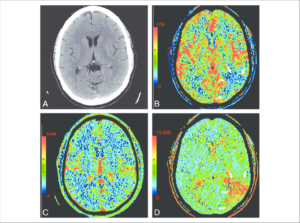
Why Does Weight Lifting Burn Fat?
Weight lifting involves using resistance to increase muscle tone, mass and endurance. It also helps promote bone and joint health and boosts your resting metabolic rate.
To maximize the benefits of weight lifting, start slow and focus on form. It is recommended to seek the advice of a physical therapist or fitness trainer who specializes in weight training.
Strengthens Bones and Joints
Working your muscles doesn’t just strengthen them—it also improves bone and joint health. Research suggests that full-body strength training can slow the natural weakening of bones and joints that occurs as you age, and may prevent osteoporosis or help treat it.
Strong muscles, tendons and cartilage are all beneficial for your joints because they make movement smooth and reduce injury risk. Weight lifting can also strengthen the ligaments that connect your muscles to your bones, which can help relieve the pain of chronic conditions like arthritis.
To protect your joints, start slowly and increase your reps (repetition) rather than your weight. It’s also important to use proper form and take breaks when needed. And remember, if you’re new to weight lifting or have an existing injury, it’s a good idea to consult with a fitness professional to learn how to perform the exercises correctly.
Combine weight lifting with other types of exercise, such as cardio and flexibility. A regular routine with both cardio and weight training can help you lose weight, increase muscle tone and strength, improve your heart health, and even boost your mood! Incorporate a few sessions of each exercise per week, and try to alternate days for each type of workout. This way, you can get the most out of each workout without overworking your body.
Strengthens Muscles
Weight lifting is a type of resistance training that causes muscles to contract against a force, which helps them increase in strength, tone and mass. It’s an essential component of any fitness routine, the U.S. Department of Health and Human Services recommends including muscle-strengthening exercises of all major muscles, such as the abdomen, hips, legs, chest, shoulders and arms, in a fitness program twice a week. This helps improve your ability to perform everyday tasks like climbing stairs or carrying heavy groceries, as well as to boost your performance in other types of exercise and sports.
Unlike aerobic exercise, which requires large amounts of energy to complete and then returns to resting state, weight training stimulates your muscles to burn calories even after your workout is over. This is known as the EPOC or Excess Post-Exercise Oxygen Consumption effect. It’s also one of the primary reasons why weight lifting burns more fat than aerobic exercise.
There are several myths and misconceptions surrounding weight lifting that can discourage people from incorporating it into their fitness routine. But as long as you follow the proper technique and safety precautions, start slowly and gradually increase your workout intensity over time, you can reap all the benefits of this empowering discipline.
It’s important to remember that if you lift weights incorrectly, it can cause injury. To avoid injury, it’s best to train with a trainer until you learn how to properly use weight equipment and understand the basic principles of proper form and technique.
Burns Calories
Weight lifting is considered resistance exercise, and when performed correctly can help you burn calories in addition to building muscle. When muscles contract, they need energy to do so, and that energy comes from the body’s stored fuel sources, including fat and glucose. The more intense the workout, the more energy your muscles demand, and the more calories you burn. In fact, research published in the journal Obesity found that adults who lifted weights and maintained or increased their lean muscle mass burned more calories than those who walked alone.
Having more muscle tissue also increases your resting metabolic rate, which means your body burns more calories at all times, even when you’re at rest. This can lead to a healthy weight loss and a more toned appearance.
There are several types of weight training, and each one can be tailored to your fitness goals. For example, bodybuilding is focused on targeting specific muscle groups to build mass and enhance athletic performance, while powerlifting is an Olympic sport that focuses on pure strength.
When you’re new to weightlifting, it’s important to take your time and focus on proper form to prevent injuries. If you’re not comfortable with a movement, ask a professional for guidance to ensure you lift safely and effectively. Also, remember to warm up and cool down with light cardio before your weight lifting sessions.
Prevents Injury
Adding weight lifting to your fitness routine can provide many benefits, including more muscle tone and strength, burning body fat, strengthening bones and joints, and even improving heart health. It can also prevent injuries. However, it is important to exercise caution when lifting weights and follow proper training techniques. If you are new to lifting weights, it is a good idea to seek the guidance of an instructor to learn proper form. It is also important to drink plenty of water, as dehydration can cause muscle cramps and increase the risk of injury.
When beginning a weight lifting program, it is best to start with low weights or resistance and gradually increase the amount of weight you lift as your strength improves. Also, be sure to warm up with a light cardio workout for five or 10 minutes before lifting weights. Cold muscles are more prone to injury than warm ones. In addition, it is a good idea to incorporate a cool down session post-workout to help in the recovery process.
Finally, it is important to avoid over-exercising. It is recommended to work each muscle group at least two times a week, but not more than three times a week. You should also include balance exercises, such as working the opposing muscles of a muscle (such as working your chest and back on one day and your arms and shoulders on another day). Finally, it is a good idea to take rest days between workouts.


